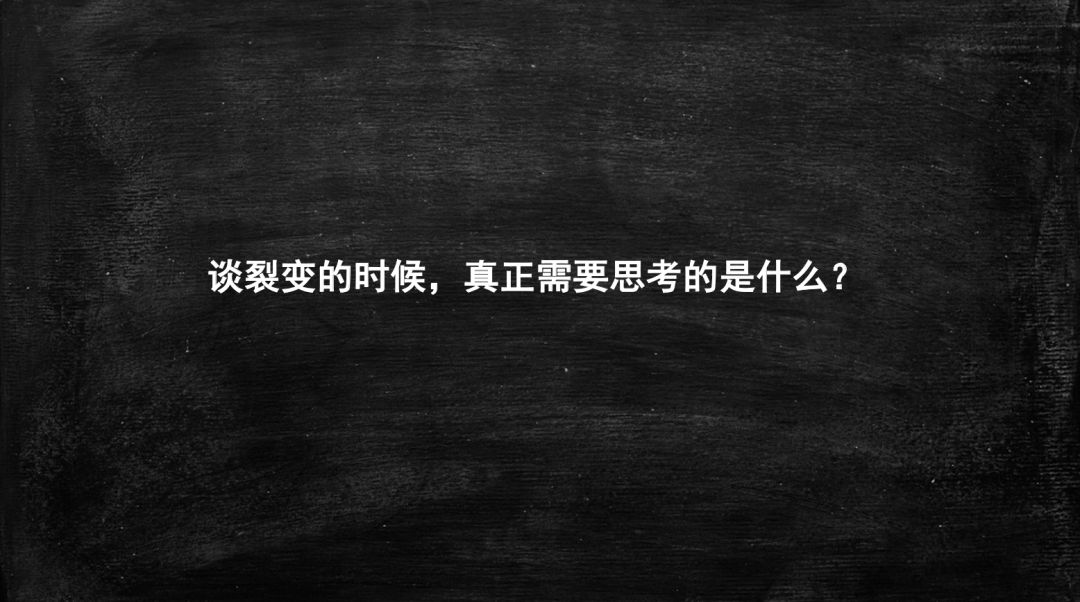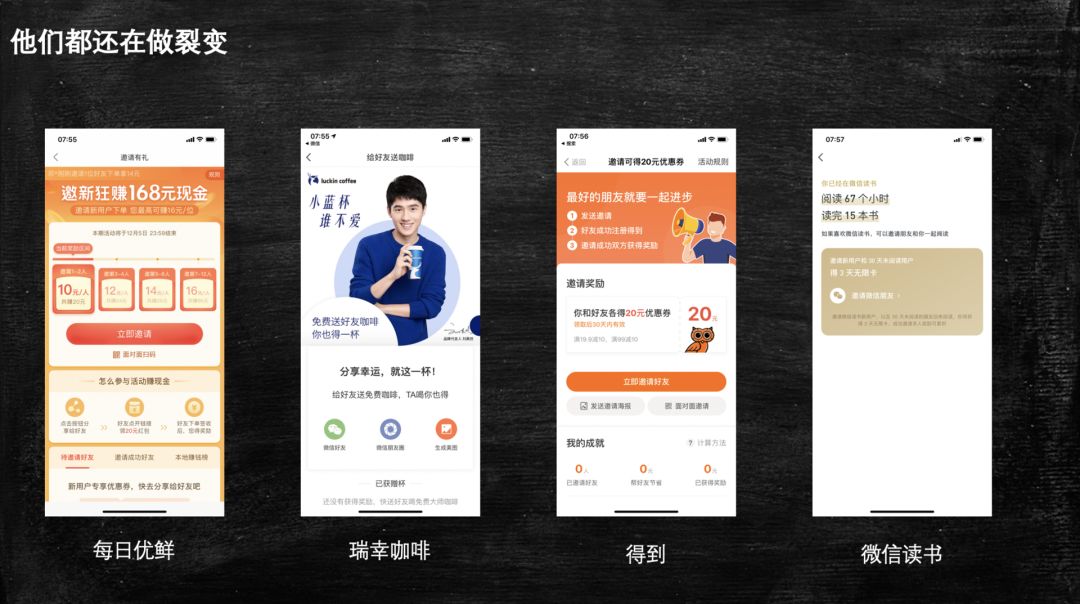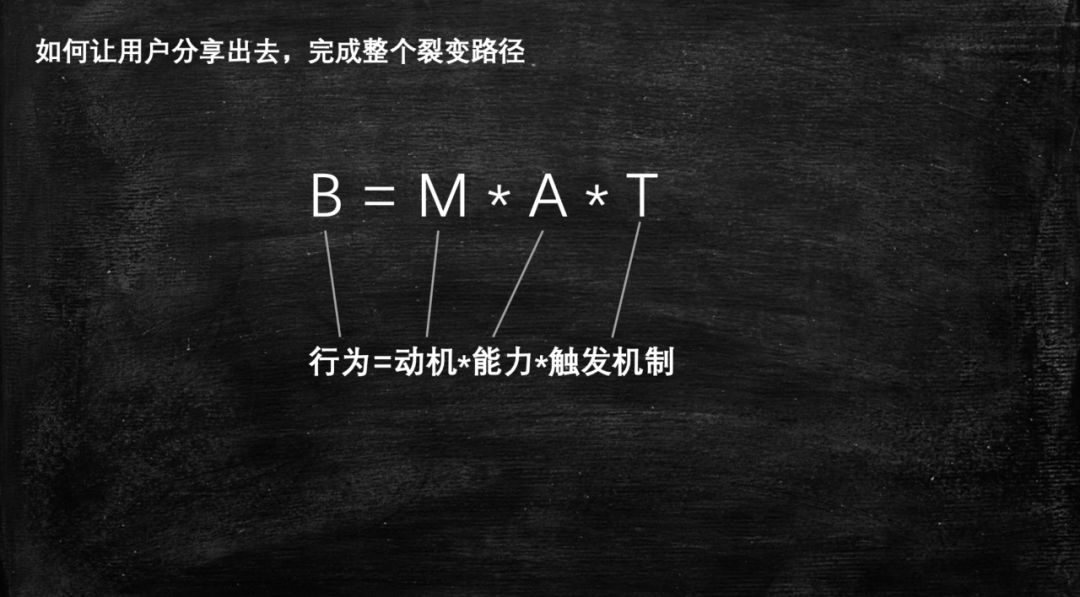No
Editor’s note: This article is from the WeChat public account “ Classes have something to say “(ID: leileitalk520), author swimming.
In recent years, I have been deeply involved in the field of user operations, and have also written some articles on user growth. Many friends will come and add me after watching it, saying that they want to discuss issues related to user growth, but often they only have “fission” when talking about the topic. In the end, they find that they do not want to talk about user growth, they just want to do fission activity.
So this time, I want to talk about fission.

Fission does not equal user growth
Many people mistakenly believe that fission is growth, and spending a lot of money and time to learn the so-called user growth skills, in fact, only one fission has been learned.
But I want to tell you that growth is really not as simple as fission. Fission is just a way to increase the number of users. If you don’t believe me, you can go to see JD, which is a large factory hired by Tencent, to increase users. There is no job responsibility for fission.
The growth of users should not only concern the number of users, but also the value of a single user. With the disappearance of the demographic dividend and the increasingly difficult growth of users, it is more important for users to refine their operations. Reducing user churn and improving user conversion rates can save high new costs.
Of course, increasing the number of users is not only a method of fission, but also channels, content, social networking, explosives, and so on. So everyone should be able to understand the relationship between fission and growth.
Fission is not equal to a growth hacker
Fissile is not the same as growing a hacker
In the market, the definition of growth hacker includes the following three conditions:
1. Be familiar with various user growth methods, tools, and methods currently on the market and apply them, including fission;
2. Able to creatively use data, technology and other means, combined with the characteristics of specific products or platforms, and then apply their own ideas to discover new growth opportunities;
3. It can build a long-term, stable and healthy growth guide for a company or a product.Engine.
So, it’s hard to be a growth hacker without five years.
WeChat fission can no longer be done?
The reason for asking this question is because some time ago, Tencent issued a management specification on the content of WeChat external links, emphasizing the need to severely induce the sharing behavior: mainly on the H5 side, to induce sharing, downloading, following, and jumping None of this works, many people jump on it: this fission can’t be done!
Not really, because wechat has a lot of restrictions on H5 sharing, but we still have small programs!
Let ’s take a look at the fission that the market is still playing

Youxian invites new crazy to earn 168 yuan daily
Credit Coffee to send free coffee to friends
Invite friends for 20 yuan each
WeChat reading invite friends to read, get unlimited cards
Look, they’re all doing it, why can’t we do it?
What is the real thing to think about fission?
After talking about the concept of fission and the fission environment of WeChat, the largest fission battlefield at present, let me share with you the underlying logic of fission. That is, what we really need to think about when talking about fission.
I usually think about these three questions when I am doing fission:
-
How to let users share and complete the complete fission
-
How many users can each user bring?
-
How can users convert or stay to reduce costs
First of all, the first key point is how to let users share it, whether it is a shared poster or applet or H5, or Weibo, etc. to complete the entire fission path.
This has a very classic formula. A doctor of Stanford University published a model on “Behavioral Design” in 2009. This model is simply expressed as B = MAT. The generation of behavior requires three elements: Motive, the ability to complete this behavior (Ability), the trigger that urges people to take action (Trigger)

How do you understand it? For example, if someone sent you a WeChat message and you did n’t reply, what would be the reason?
-
Maybe the person who sent you the message is not important to you? Or the content of the message is not important, do not need to reply immediately?
-
Maybe you are particularly busy temporarily and don’t have time to reply?
-
It may also be that your WeChat closed the message reminder, did not hear the phone vibration, I do n’t know someone sent you a message …
There are many reasons, but almost every cause can be mapped to a deeper level. For example, the person who sent you a message is not important to you because it lacks the motivation for replying; there is no time to reply because it lacks the ability to reply; turning off the reminder is the trigger that lacks a reply …
Used in common poster fission, the motivation is the bait, such as free snacks, courses, low-priced goods, etc .; ability is how many people you can invite to help you, and the trigger is the attraction Shared posters and real-time notifications to remind you of progress.
The first question you need to think about first: how to get users to complete fission action!
Then we need to design a motivation for users, that is, to give users a powerful trigger mechanism within their capabilities.
What do you mean? As mentioned just now, the most common poster fission is an example. By inviting others to follow the public account and giving the inviter free materials, books, etc., let interested users complete the corresponding actions. These free prizes are the “motivation” for users to complete the corresponding behavior; inviting others to pay attention to the public account is the actions that the user can achieve within the reach of the network. These actions are the “abilities” of the user; After completing some or all of the content required by the conditions, they will receive a reward reminder or progress prompt as a “trigger mechanism” to stimulate the user to repeat the corresponding action continuously.
Then we can strengthen these three elements to stimulate users’ sharing behavior and strengthen their motivation for action. Here are three ways I share:
The first, the contrast effect: is to let the user see the difference between completing an action and not completing it. For example, I was attracted by the derived course some time ago, and he told me whether it is usually too troublesome to process a bunch of data, and it is particularly expensive
Fissile is not the same as growing a hacker
In the market, the definition of growth hacker includes the following three conditions:
1. Be familiar with various user growth methods, tools, and methods currently on the market and apply them, including fission;
2. Able to creatively use data, technology and other means, combined with the characteristics of specific products or platforms, and then apply their own ideas to discover new growth opportunities;
3. It can build a long-term, stable and healthy growth guide for a company or a product.Engine.
So, it’s hard to be a growth hacker without five years.
WeChat fission can no longer be done?
The reason for asking this question is because some time ago, Tencent issued a management specification on the content of WeChat external links, emphasizing the need to severely induce the sharing behavior: mainly on the H5 side, to induce sharing, downloading, following, and jumping None of this works, many people jump on it: this fission can’t be done!
Not really, because wechat has a lot of restrictions on H5 sharing, but we still have small programs!
Let ’s take a look at the fission that the market is still playing

Youxian invites new crazy to earn 168 yuan daily
Credit Coffee to send free coffee to friends
Invite friends for 20 yuan each
WeChat reading invite friends to read, get unlimited cards
Look, they’re all doing it, why can’t we do it?
What is the real thing to think about fission?
After talking about the concept of fission and the fission environment of WeChat, the largest fission battlefield at present, let me share with you the underlying logic of fission. That is, what we really need to think about when talking about fission.
I usually think about these three questions when I am doing fission:
-
How to let users share and complete the complete fission
-
How many users can each user bring?
-
How can users convert or stay to reduce costs
First of all, the first key point is how to let users share it, whether it is a shared poster or applet or H5, or Weibo, etc. to complete the entire fission path.
This has a very classic formula. A doctor of Stanford University published a model on “Behavioral Design” in 2009. This model is simply expressed as B = MAT. The generation of behavior requires three elements: Motive, the ability to complete this behavior (Ability), the trigger that urges people to take action (Trigger)

How do you understand it? For example, if someone sent you a WeChat message and you did n’t reply, what would be the reason?
-
Maybe the person who sent you the message is not important to you? Or the content of the message is not important, do not need to reply immediately?
-
Maybe you are particularly busy temporarily and don’t have time to reply?
-
It may also be that your WeChat closed the message reminder, did not hear the phone vibration, I do n’t know someone sent you a message …
There are many reasons, but almost every cause can be mapped to a deeper level. For example, the person who sent you a message is not important to you because it lacks the motivation for replying; there is no time to reply because it lacks the ability to reply; turning off the reminder is the trigger that lacks a reply …
Used in common poster fission, the motivation is the bait, such as free snacks, courses, low-priced goods, etc .; ability is how many people you can invite to help you, and the trigger is the attraction Shared posters and real-time notifications to remind you of progress.
The first question you need to think about first: how to get users to complete fission action!
Then we need to design a motivation for users, that is, to give users a powerful trigger mechanism within their capabilities.
What do you mean? As mentioned just now, the most common poster fission is an example. By inviting others to follow the public account and giving the inviter free materials, books, etc., let interested users complete the corresponding actions. These free prizes are the “motivation” for users to complete the corresponding behavior; inviting others to pay attention to the public account is the actions that the user can achieve within the reach of the network. These actions are the “abilities” of the user; After completing some or all of the content required by the conditions, they will receive a reward reminder or progress prompt as a “trigger mechanism” to stimulate the user to repeat the corresponding action continuously.
Then we can strengthen these three elements to stimulate users’ sharing behavior and strengthen their motivation for action. Here are three ways I share:
The first, the contrast effect: is to let the user see the difference between completing an action and not completing it. For example, I was attracted by the derived course some time ago, and he told me whether it is usually too troublesome to process a bunch of data, and it is particularly expensive
How to let users share and complete the complete fission
How many users can each user bring?
How can users convert or stay to reduce costs
First of all, the first key point is how to let users share it, whether it is a shared poster or applet or H5, or Weibo, etc. to complete the entire fission path.
This has a very classic formula. A doctor of Stanford University published a model on “Behavioral Design” in 2009. This model is simply expressed as B = MAT. The generation of behavior requires three elements: Motive, the ability to complete this behavior (Ability), the trigger that urges people to take action (Trigger)

How do you understand it? For example, if someone sent you a WeChat message and you did n’t reply, what would be the reason?
-
Maybe the person who sent you the message is not important to you? Or the content of the message is not important, do not need to reply immediately?
-
Maybe you are particularly busy temporarily and don’t have time to reply?
-
It may also be that your WeChat closed the message reminder, did not hear the phone vibration, I do n’t know someone sent you a message …
There are many reasons, but almost every cause can be mapped to a deeper level. For example, the person who sent you a message is not important to you because it lacks the motivation for replying; there is no time to reply because it lacks the ability to reply; turning off the reminder is the trigger that lacks a reply …
Used in common poster fission, the motivation is the bait, such as free snacks, courses, low-priced goods, etc .; ability is how many people you can invite to help you, and the trigger is the attraction Shared posters and real-time notifications to remind you of progress.
The first question you need to think about first: how to get users to complete fission action!
Then we need to design a motivation for users, that is, to give users a powerful trigger mechanism within their capabilities.
What do you mean? As mentioned just now, the most common poster fission is an example. By inviting others to follow the public account and giving the inviter free materials, books, etc., let interested users complete the corresponding actions. These free prizes are the “motivation” for users to complete the corresponding behavior; inviting others to pay attention to the public account is the actions that the user can achieve within the reach of the network. These actions are the “abilities” of the user; After completing some or all of the content required by the conditions, they will receive a reward reminder or progress prompt as a “trigger mechanism” to stimulate the user to repeat the corresponding action continuously.
Then we can strengthen these three elements to stimulate users’ sharing behavior and strengthen their motivation for action. Here are three ways I share:
The first, the contrast effect: is to let the user see the difference between completing an action and not completing it. For example, I was attracted by the derived course some time ago, and he told me whether it is usually too troublesome to process a bunch of data, and it is particularly expensive